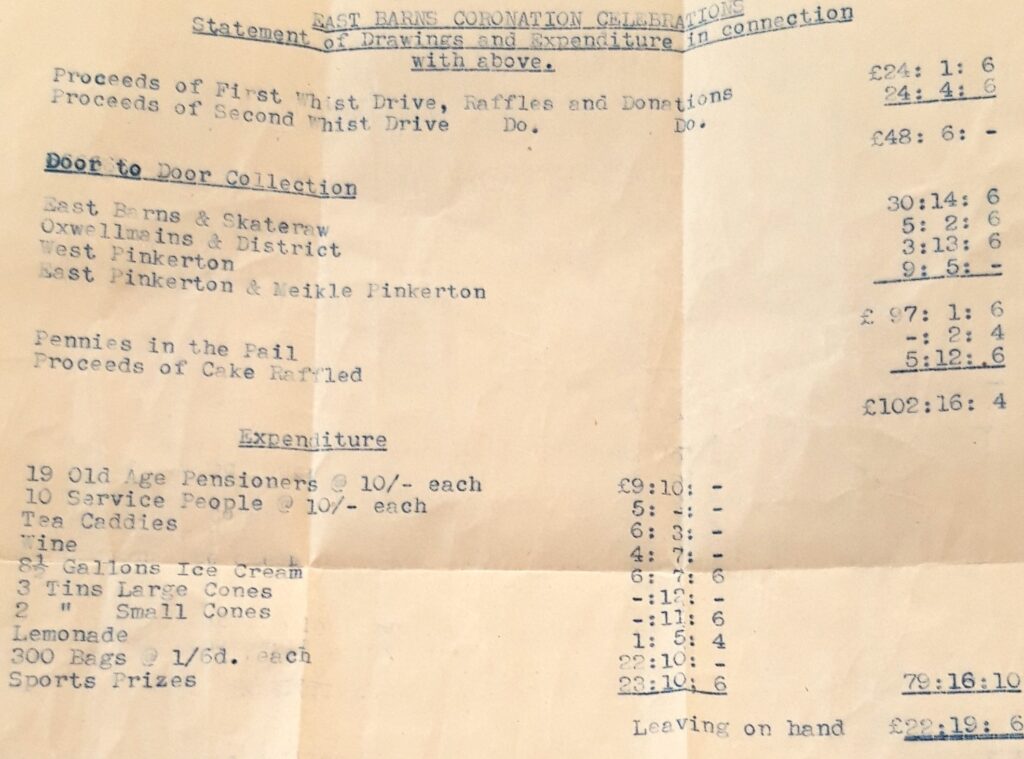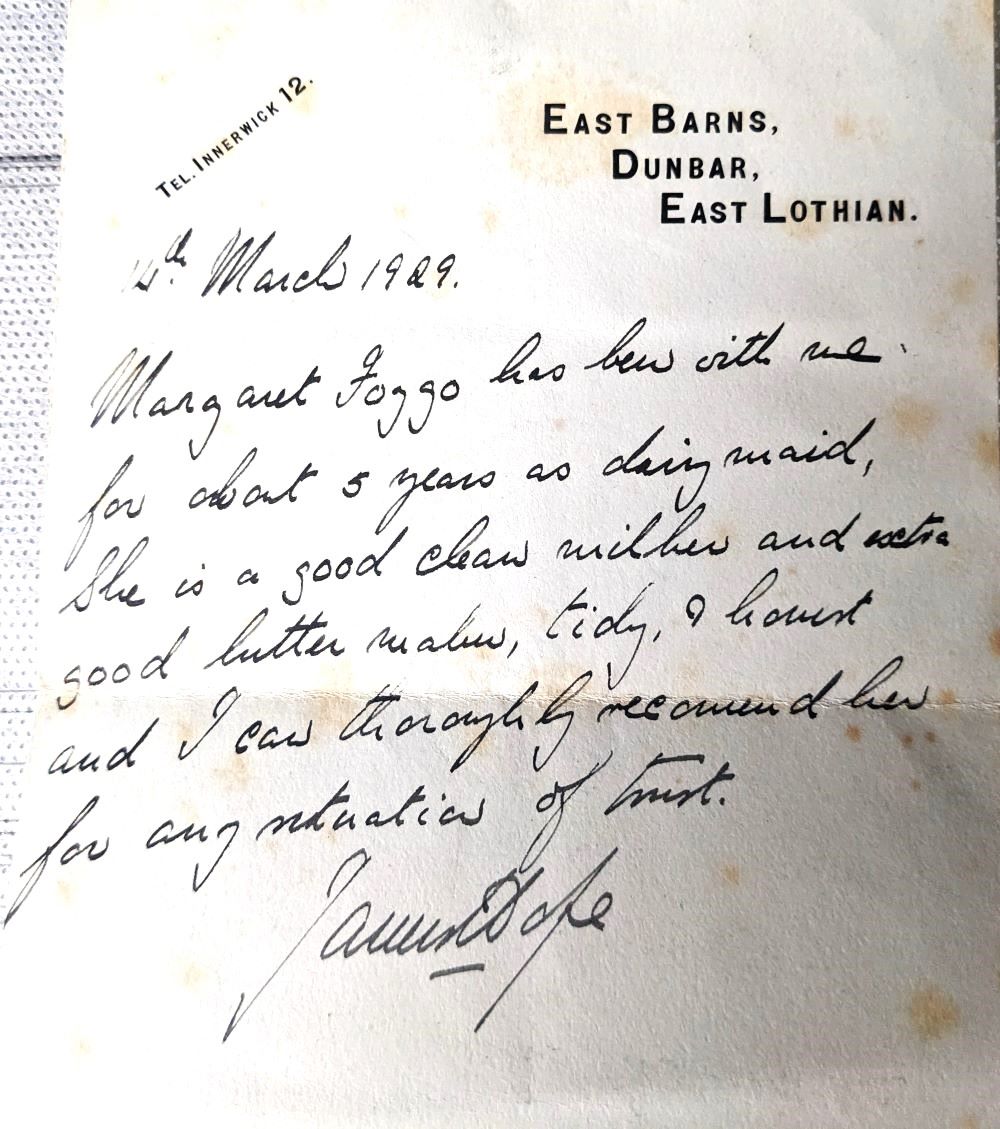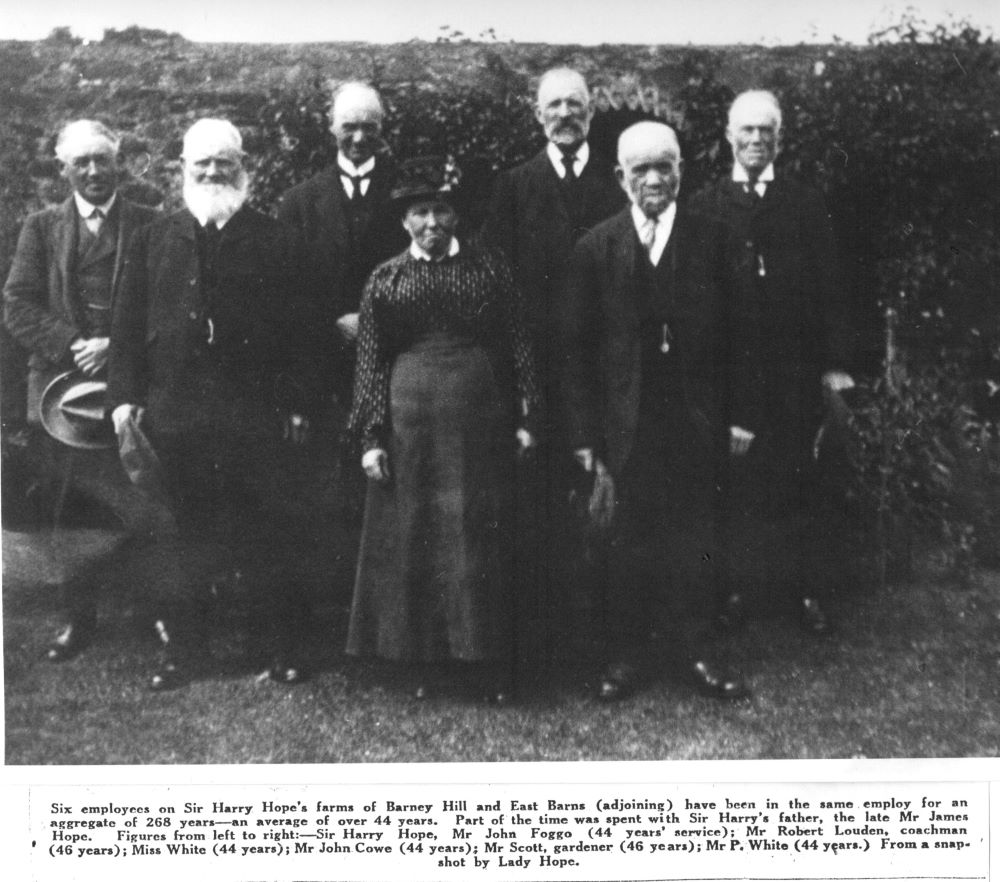Two recent donations to DDHS from members Andrew and Margaret Ashton are interesting documents, relating firstly to the 1953 coronation and secondly to a reference from 1929. These are accompanied by a photo of a gathering of employees at Barneyhill.
The East Barns coronation party
The photo below – best enlarged – shows details of the “Drawings and Expenditure” relating to the coronation celebrations in East Barns in 1953. East Barns lies c2km east of Dunbar and was once a hamlet in which agricultural workers on nearby farms lived. The site of the hamlet is now part of the Tarmac Cement works, with the houses disappearing after the building of the cement works in the 1960s. You can read an interesting history of East Barns on the John Gray website here. The party at East Barns obviously involved people from nearby farms and hamlets as collections were made in Skateraw, Oxwell Mains and the three Pinkertons. The sum raised – £102 in 1953 is remarkable as that is worth over £3,500 in today’s money, so there must have been a very well organised committee. There is no mention of individual donations but presumably the wealthy local farmers would have been approached to make larger donations than most people could afford to give. This is a fascinating document and we are lucky that it has survived. You can read more about East Barns in the early 1950s here.

The second photo below (best enlarged) dates from 1929 and is equally fascinating as it refers to an occupation that no longer exists. The Margaret Foggo referred to in the reference is the great aunt of Margaret Ashton, on her father’s side. Margaret Foggo is referred to as “a good, clean milker and good butter maker”. This period was before the introduction of machinery to milk cows. This academic paper notes that “The herringbone parlour, a mechanical milking technology, was invented in Australia in 1908, but took over 70 years to be adopted by the majority of British farmers”. Cows in the 1920s and for many years to come, were milked by individuals and people, mainly women, on farms such as East Barns were involved in making butter on the farm. The butter would be used on the farm but also sold to shops in Dunbar. You can see a photo of two 1920s dairy maids from Blantyre here. The writer of the reference is James Hope the son of landowner Sir Harry Hope, who was knighted in 1920 and became a baronet. Sir James Hope inherited his title in 1959 when his father died and took over the running of East Barns farm in the 1920s.

The third photo below is from the DDHS archives and features a group of long serving people who worked on the farms at Barney Hill and East Barns, along with their employer Sir Harry Hope. John Foggo, 2nd from the left, is Margaret Ashton’s great grandfather. The workers are all very well dressed for this photo taken by Lady Hope. One notable aspect relating to the longevity of service of the people in the photo is that, in the late 19th and early 20th centuries, people who lived and worked on farms tended to stay in one place for most of or perhaps all of their lives. In later years, such as in the 1950s, many workers whose status was below that of the grieve, were only given short tenancies and moved form farm to farm around East Lothian. Both the Foggo family and that of John Cowe, 5th from the left, still lived in and around East Barns until the late 1950s.

You must be logged in to post a comment.